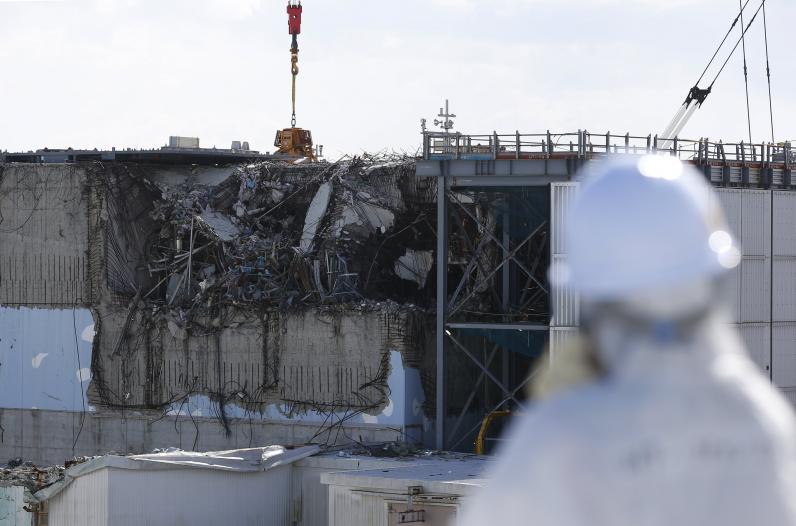
Five years ago, a violent earthquake triggered a 10-meter high tsunami that hit the Fukushima Daiichi nuclear power station causing multiple meltdowns. Nearly 19,000 people were killed or left missing and 160,000 lost their homes.
Today, the radiation at the plant is still so powerful that it has proven impossible to get inside and remove the extremely dangerous melted fuel rods.
The solution? Custom-built robots.

The Robotic Solution
The plant’s operator, Tokyo Electric Power Co (Tepco), has made some progress, such as removing hundreds of spent fuel rods in one damaged building. But the location of the melted fuel rods in the other three reactors at the plant remains unknown.
“It is extremely difficult to access the inside of the nuclear plant,” Naohiro Masuda, Tepco’s head of decommissioning said in an interview. “The biggest obstacle is the radiation.”
Because this part of the plant is so dangerous to humans, Tepco has been developing robots that can swim under water and negotiate obstacles in damaged tunnels and piping to search for the melted fuel rods. Each robot has to be custom-built for each building. “It takes two years to develop a single-function robot,” Masuda said.
However, the robots aren’t working exactly as the company hoped. As soon as they get close to the reactors, the radiation destroys their wiring and renders them useless, causing long delays, Masuda said. The last robot inserted into one of the reactors sent only grainy images before breaking down.
“The End of the Beginning”
Tepco was fiercely criticized for its handling of the situation, which has been called the worst nuclear disaster since Chernobyl. Since the initial earthquake though, the situation has improved dramatically. Radiation levels in many places at the site are now as low as those in Tokyo.
Despite the danger, 8,000 workers are at the plant at any one time working to remove debris, build storage tanks, lay piping, and prepare to dismantle parts of the plant. Much of the work involves pumping a steady torrent of water into the wrecked and highly radiated reactors to cool them down. Afterward, the radiated water is then pumped out of the plant and stored in tanks that are proliferating around the site.
This leads to another huge challenge for Tepco: What do you do with nearly a million tons of radioactive water? Akiro Ono, the site manager, said he is “deeply worried” the storage tanks will leak radioactive water in the sea – as they have done several times before – prompting strong criticism for the government.
In addition to protecting the sea, it’s vital to stop groundwater from getting into the plant. To combat this, Tepco is working on the world’s biggest ice wall, which will be used to keep the water from flowing into the basements of the damaged reactors and getting contaminated.
Artie Gunderson, a former nuclear engineer, explains, “The reactors continue to bleed radiation into the ground water and thence into the Pacific Ocean,” Gunderson said. “When Tepco finally stops the groundwater, that will be the end of the beginning.”
Ono estimates that Tepco has completed around 10 percent of the work to clear the site up. In total, the decommissioning process could take 30 to 40 years.